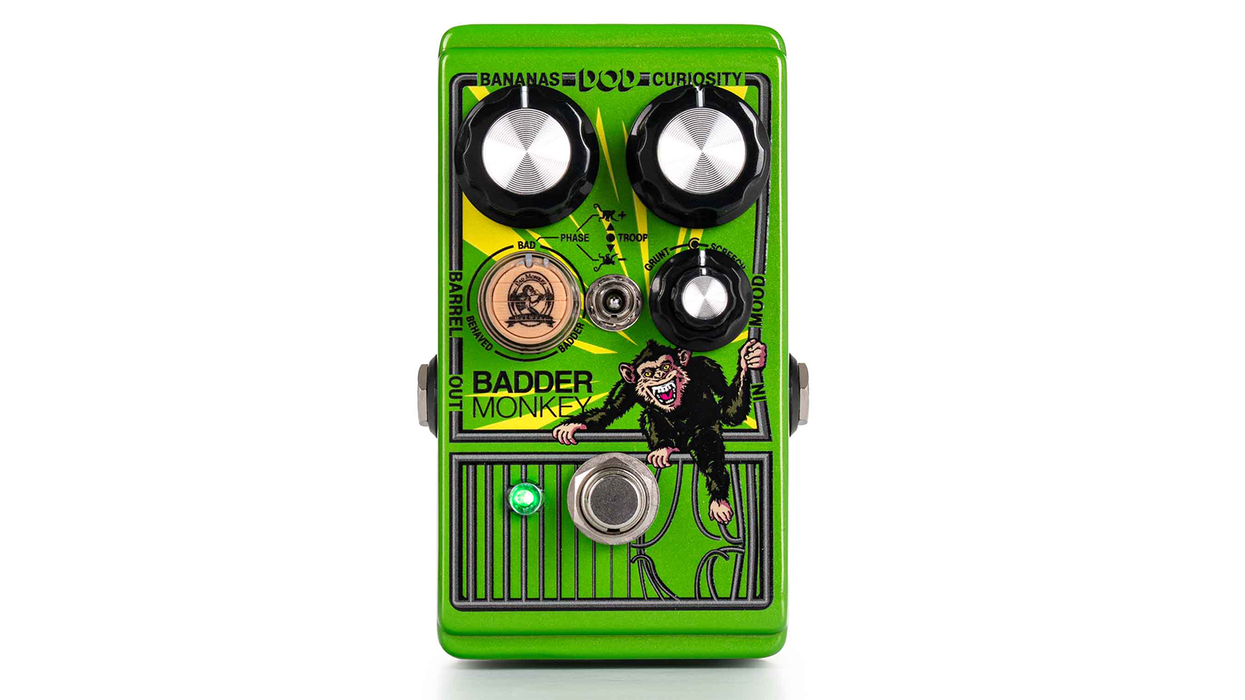If you follow the NFL, you’ve likely seen highlights of the Cleveland Browns at some point. Inevitably, Browns footage is accompanied by scenes of the notorious Dawg Pound, a group of passionate fans with no-nonsense attitudes and an unwavering commitment to their team. This mentality can also be found in fellow Clevelander Jon Hill, whose dedication and love of guitar building has contributed professional-grade instruments since 1989. This year, Hill introduced Bootleg Guitars and Basses, a new line of instruments and culmination of his experiences as a custom luthier. One of his models is appropriately named the Dawg, a bass with solid tone and no frills.
Scouting Report
Jon Hill took a less-is-more approach when designing the Dawg bass. There is no over-the-top flashiness on the instrument—just a smooth, satin finish that invites the player to get down and dirty. The two-piece, Northern ash body has an attractive grain pattern and a body shape that combines both style and com- fort. Following the contours of the body is a very cool pickguard that has a cutaway near the neck to make popping the strings more accessible.
Hill’s straightforward methodology for the Dawg is also found in the electronics. Going with a passive setup, he employed Bartolini BC4C hum-cancelling pickups wired to the Volume and Blend knobs. Believing it diminishes the potential for noise in the circuitry, Hill opted to go without a tone pot.
A highlight of the Dawg bass is the 34" bolt-on neck, constructed of quartersawn maple and topped with a maple fretboard. The nickel frets are an indication of Hill’s craftsmanship, flawlessly installed and cleanly dressed. A closer look at the headstock reveals a quite different, but functional, device to hold down the strings—a dollar coin held in place by two screws. Hill found this to be a more cost-effective approach than pur- chasing imported string trees. And with approximately 1.2 billion of these coins piling up in federal vaults, he though they may as well be put to good use.
By combining these features with Hipshot hardware and a big brass nut, Hill has produced a Dawg that can tackle any playing situation.
Playing The Rookie
Strapped in or sitting down, the Dawg felt very balanced and maintained its position against the body, whether in an angled playing style or in a horizontal orientation. The neck was smooth and had a comfortable radius that should suit a player with big or small hands. Hill designed the bass so well that every note was easily accessible on the fretboard, without any adjustment needed in left-hand technique. Our test bass had
an excellent setup, with little to no fret buzz and near-perfect intonation.
The Blend knob is wired similarly to Sadowsky basses, whereby rolling it forward engages more of the bridge pickup, and turning it back increases the neck pickup’s dominance. Purists may prefer a more-traditional wiring of the dial, but many believe this “reverse” configuration is more intuitive.
Game Time
The overall tone of the Dawg is bright, with strong upper mids and growly lows.
The test model was played through a Glockenklang Soul head and Quattro 410, as well as an Aguilar Tone Hammer 500 with two SL112 cabinets. Through both rigs, the ash and maple combination established a bright and punchy foundation, with the Bartolinis delivering their characteristically articulate sound.
For those who require a little more flexibility in shaping their tone, the Dawg handled preamp pedals very well. Boosting the lows with an Aguilar Tone Hammer pedal added bump and booty to the bass. Pairing the Dawg with a Daring Audio Edge Activator created a modern vibe— conveying an MTD-like zing.
The Dawg excelled in aggressive live situations and its inherent tonal charac- teristics cut through the mix like an angry Peyton Hillis running through a defensive line. Balancing both pickups creates a solid tone for picking or fingerstyle rock, and Jaco disciples will enjoy the snarl of the bridge pickup. Soloing the neck pickup had more growl than girth, but it conjured up some Louis Johnson-style funk when slap- ping the bass.
Option Plays
Bootleg also offers a 5-string version of
the Dawg bass, extending the scale length to 35", which makes the 5th string more taut. Though there are no additional wood options for the Dawg at this time, a buyer has the option of choosing red, white, or black for the pearloid pickguard’s color.
The Verdict
To sum up the Dawg bass in one word, it would be “value.” It’s rare to find a
USA-made instrument built this well, with a price point that won’t bust your salary cap. Hill has created an instrument that can handle the rigors of the road and maintain an eye-catching look from the stage. Its tonal palette covers most of the common tones for the bassist, though it may not appeal to those who prefer a warmer, thicker sound. If you’re looking to add a bass to your roster, the Dawg 4 might just become the MVP in your collection.
Buy if...
you want a well-crafted bass with good tone at a great price.
Skip if...
you require bells and whistles, and/or traditional looks.
Rating...
Street $1849 - Bootleg Guitars and Basses - bootlegguitars.com |




![Rig Rundown: Russian Circles’ Mike Sullivan [2025]](https://www.premierguitar.com/media-library/youtube.jpg?id=62303631&width=1245&height=700&quality=70&coordinates=0%2C0%2C0%2C0)


![Rig Rundown: AFI [2025]](https://www.premierguitar.com/media-library/youtube.jpg?id=62064741&width=1245&height=700&quality=70&coordinates=0%2C0%2C0%2C0)












 Shop Scott's Rig
Shop Scott's Rig















































